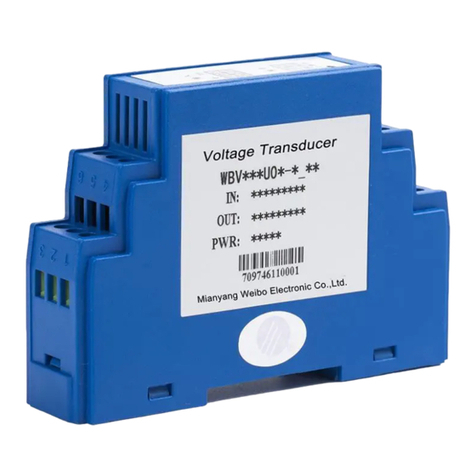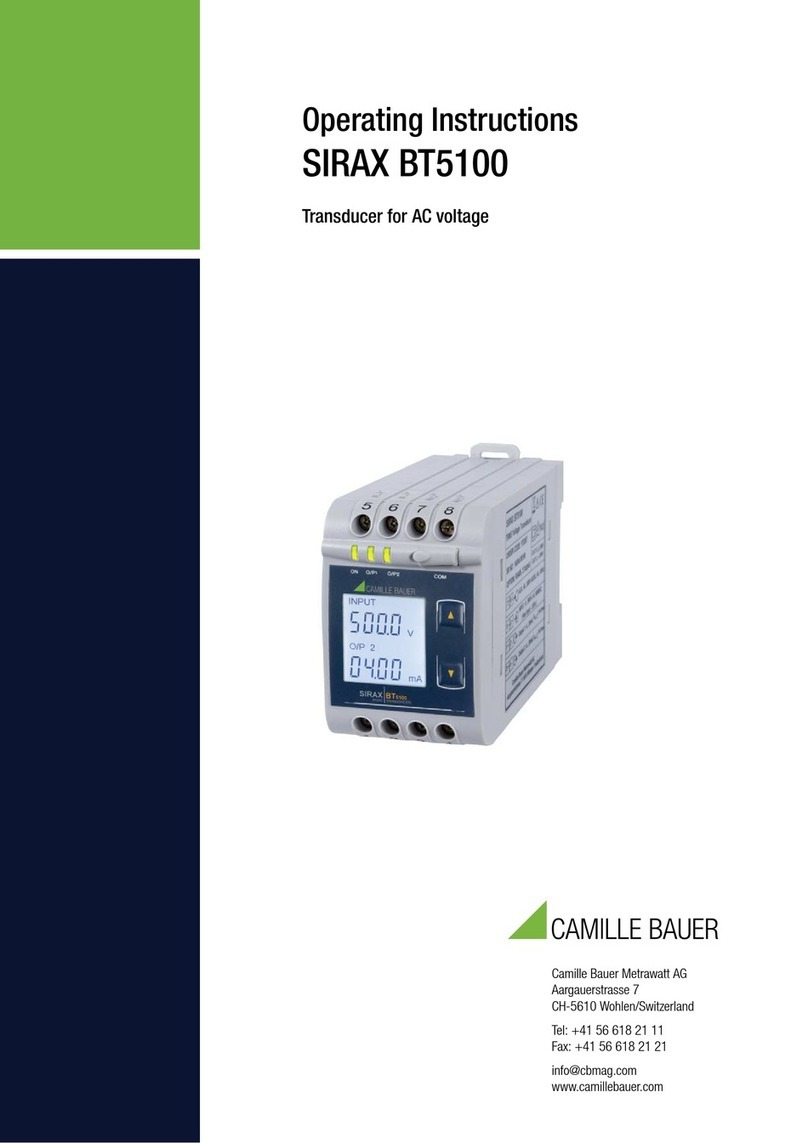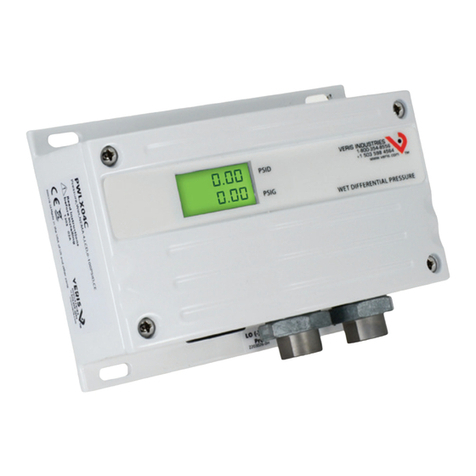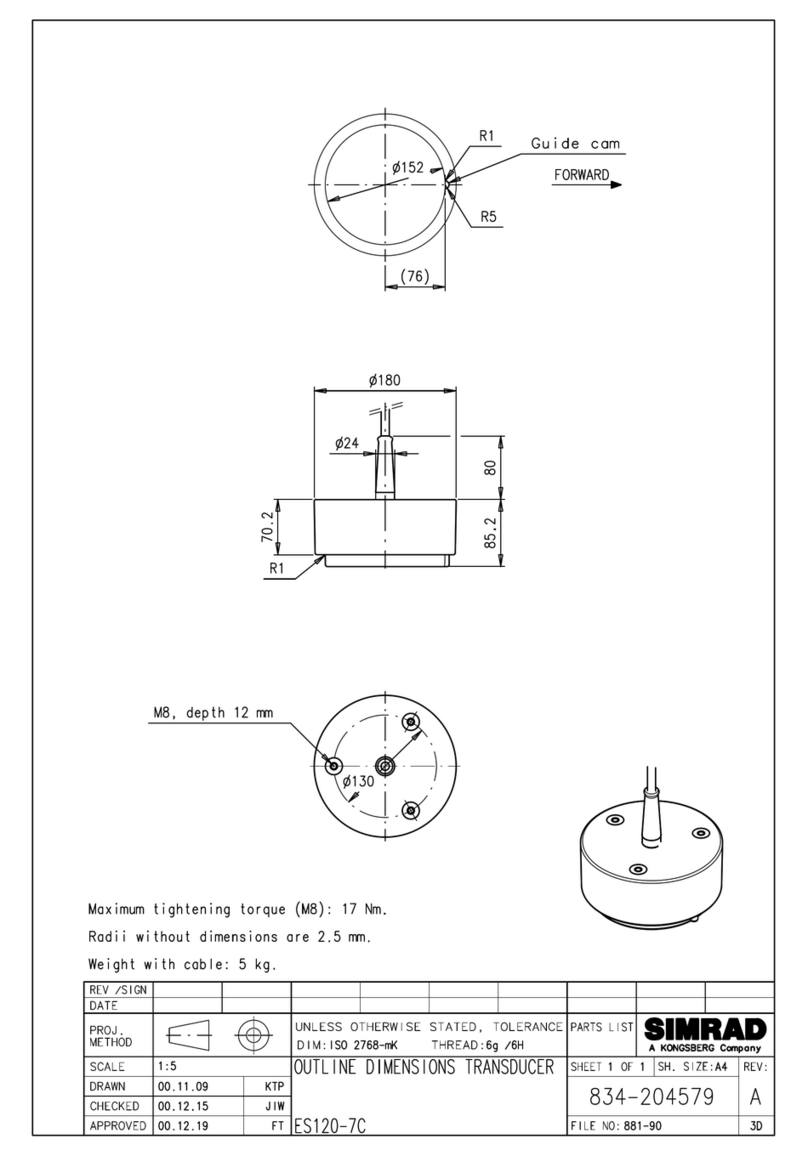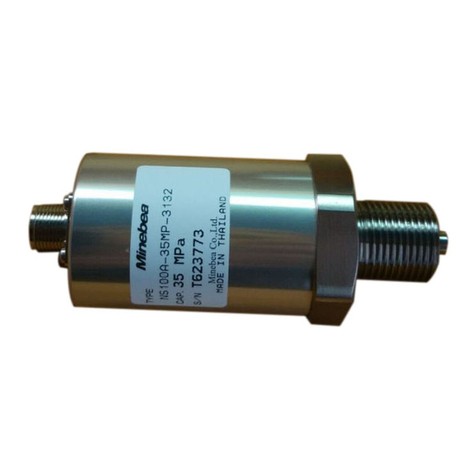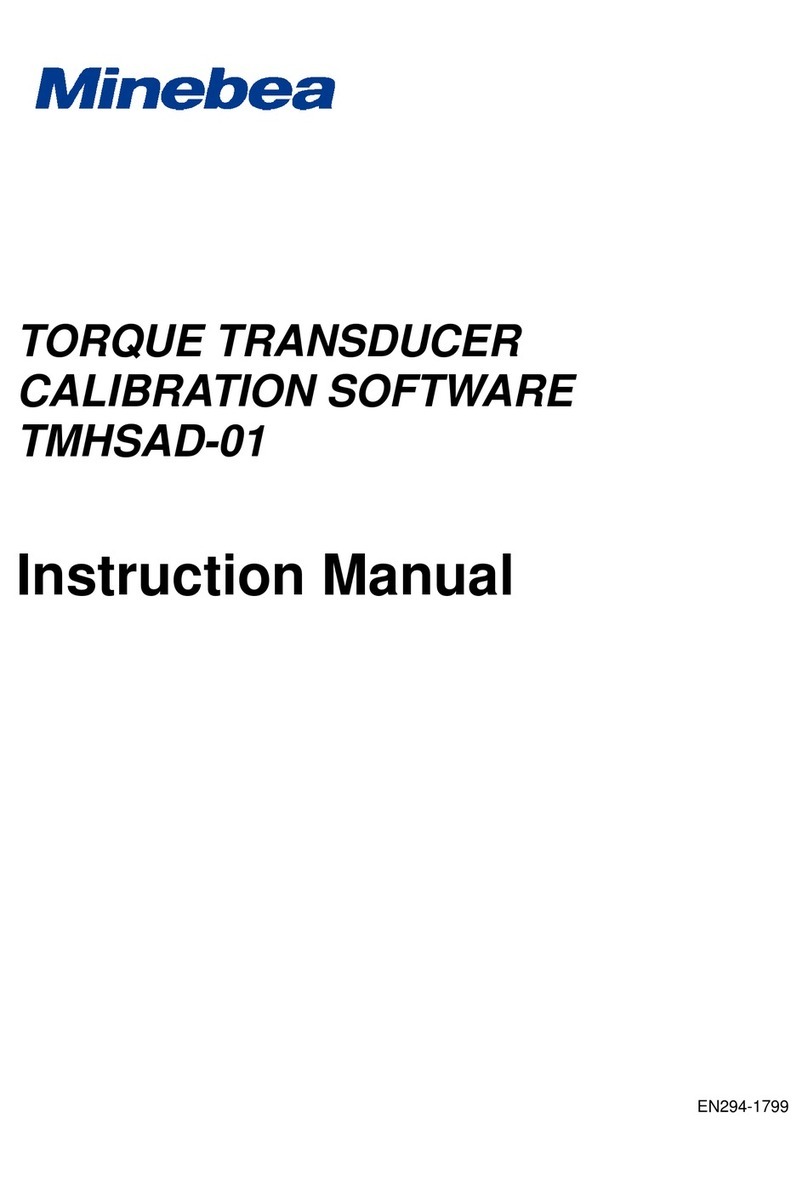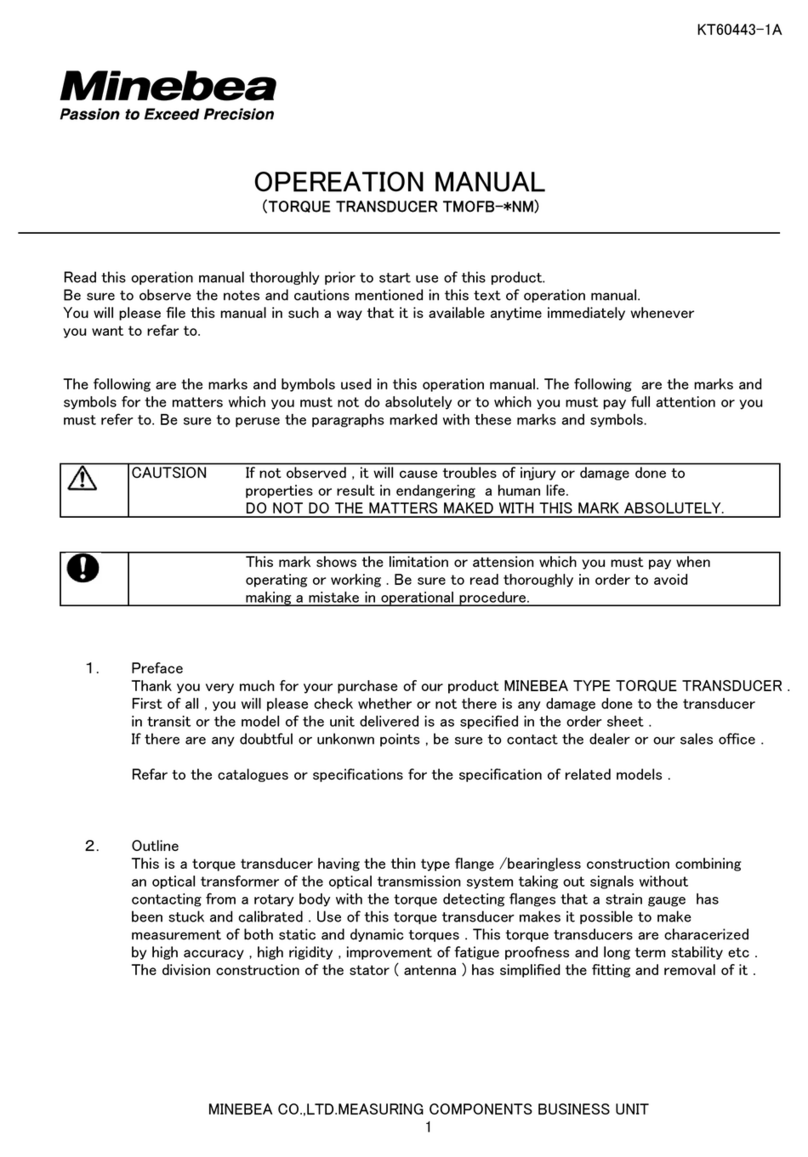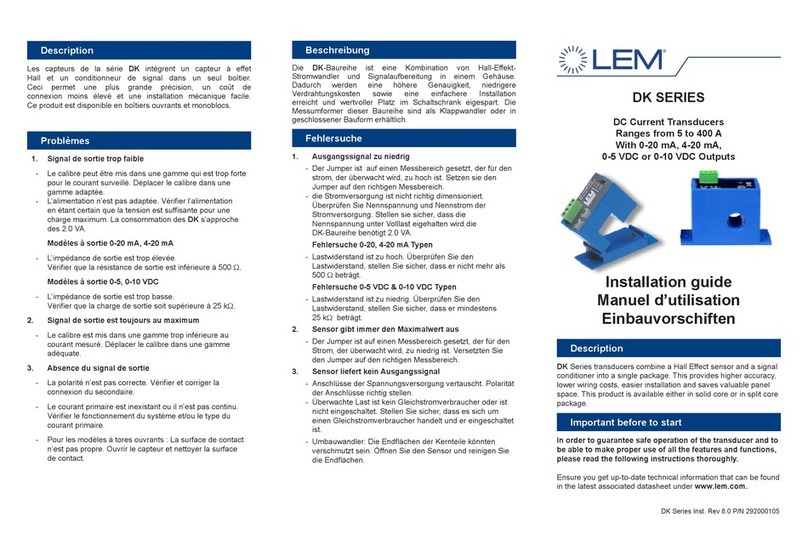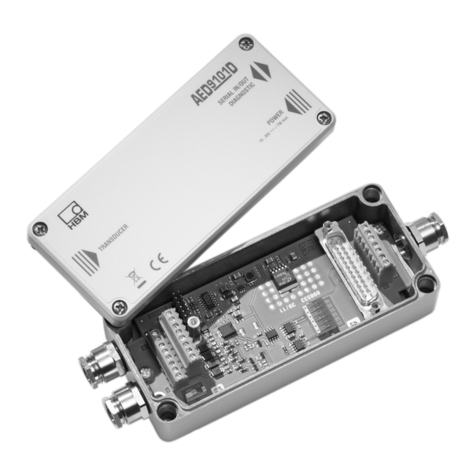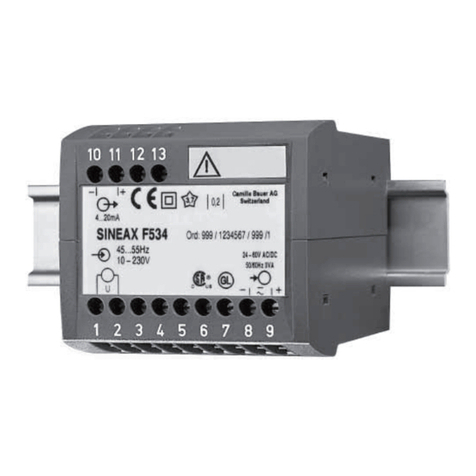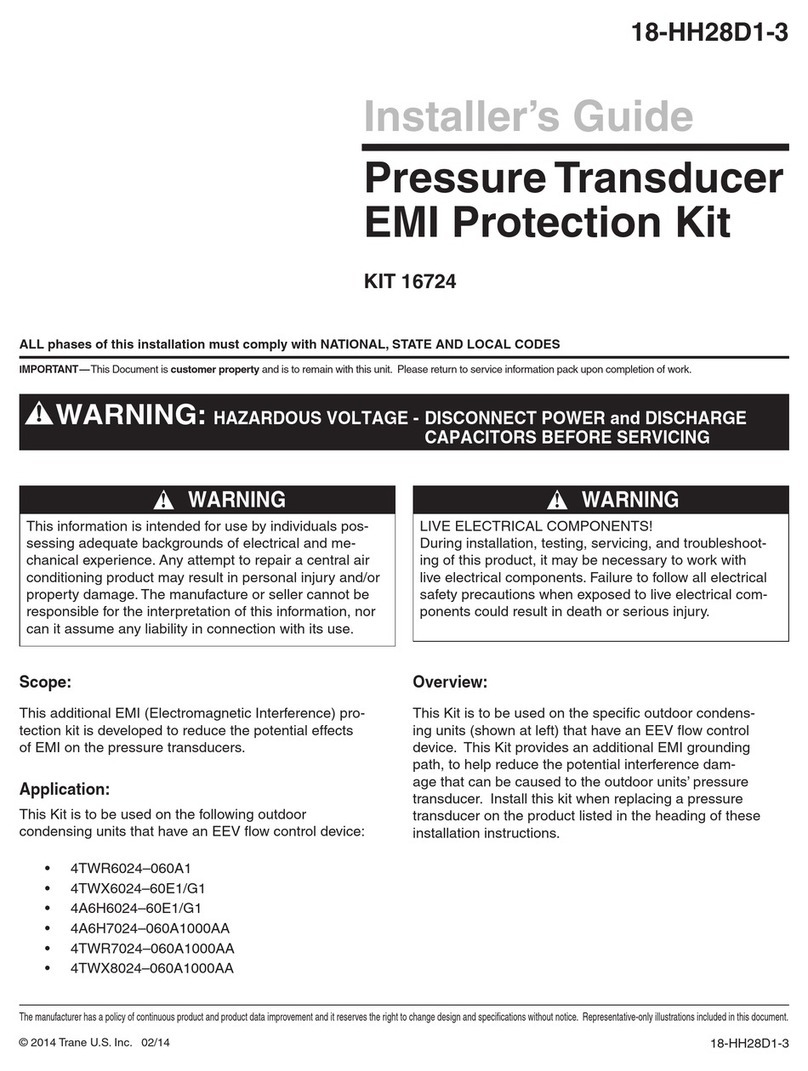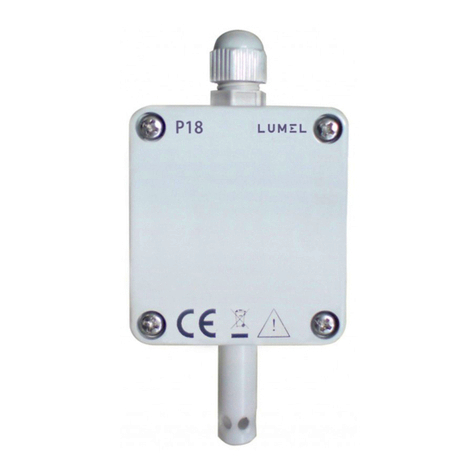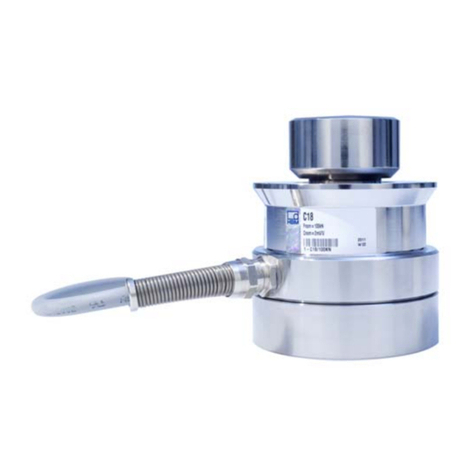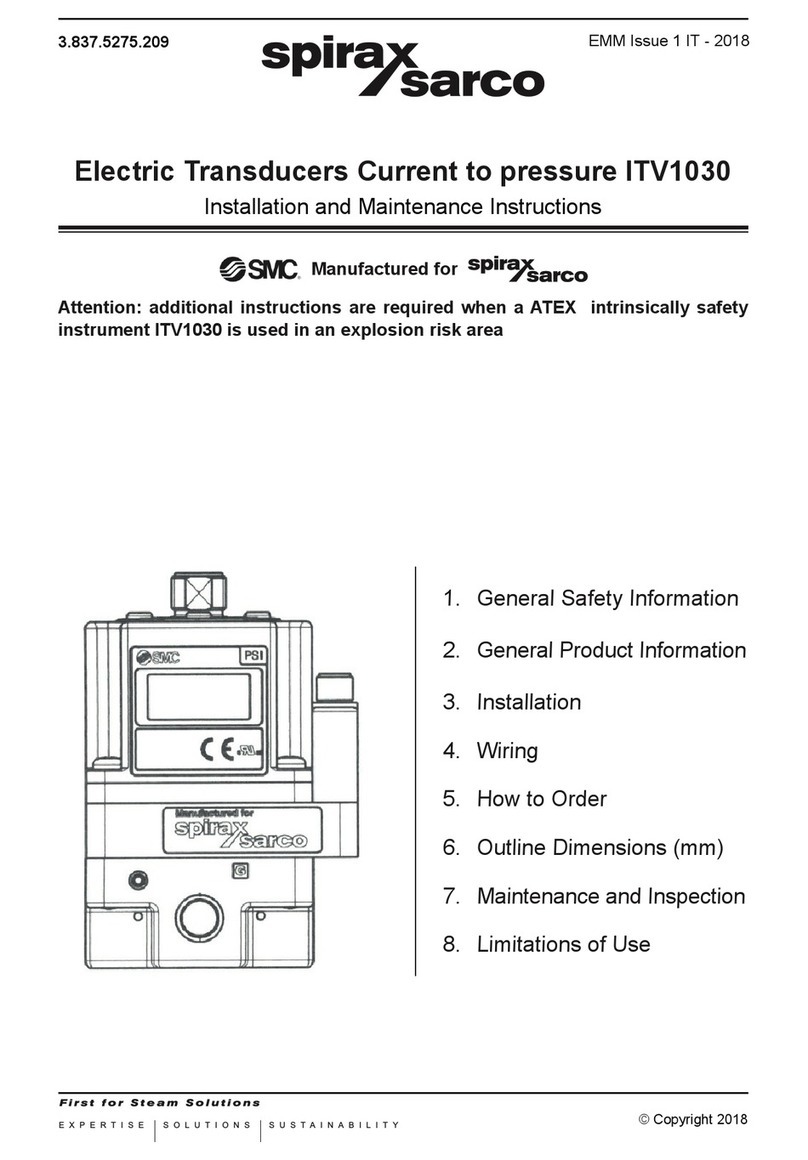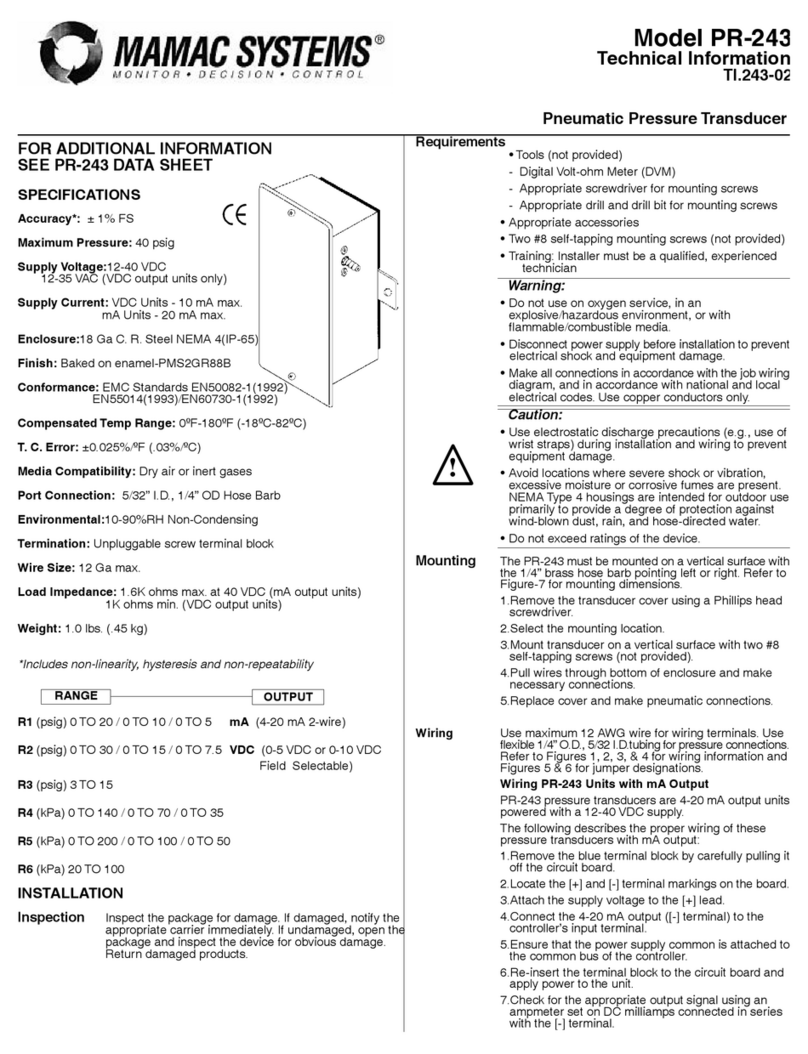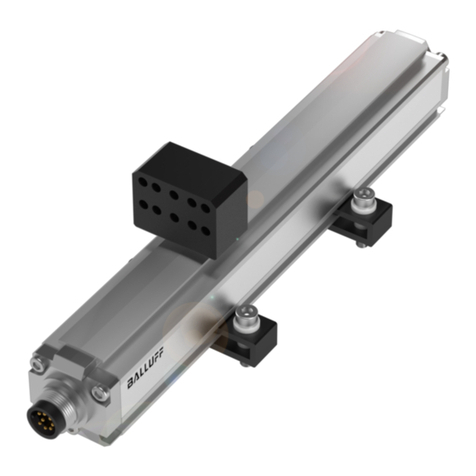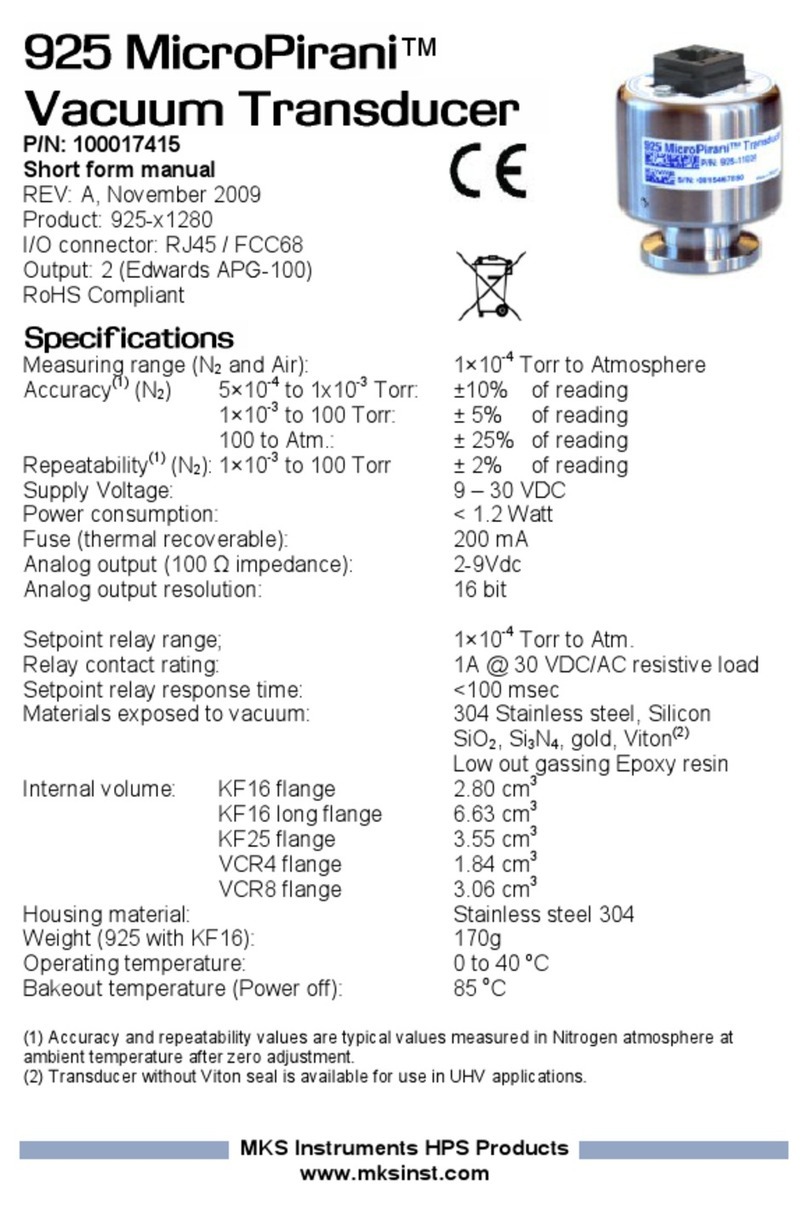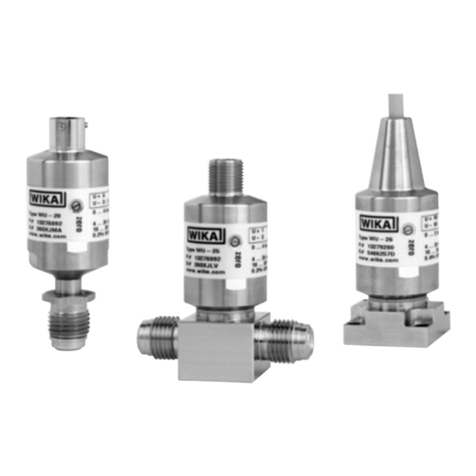Sec 4: Measurement Preparation
(1) Wiring
Connect the dedicated cable with the transmitter to be used.
For more information, see the transmitter (CSA-562B) instruction manual.
(2) Calibration
Adjust the zero and calibrate the output when operating with no load.
For more information, see the transmitter (CSA-562B) instruction manual.
A positive torque output is generated when the rotor is twisted counterclockwise.
The output polarity is fixed and cannot be changed.
(3) Test running
Test run the equipment by operating at low speed. Confirm the absence of
abnormal output, noise, overheating, or vibration before starting measurement.
Sec 5: Maintenance and Inspection
This equipment transmits signals optically. This means the signal may not be transmitted
or received correctly if the photo emitter or photoreceptor is obscured by soot or other
by ethanol or other solvent.
Sec 6: Precautions
(1) This equipment transmits signals optically. While ambient fluorescent lights
should present no problems, infrared light from sunlight or incandescent lights
may cause malfunctions.
Use a protective cover to shield against outside light if the equipment is used in
locations where sunlight or incandescent lights are present.
(2) The antenna stator conveys a current to transmit the input voltage.
Do not allow it to come into contact with covers in the vicinity or other metal objects.
(3) Two signal output connectors are located on the left and right of the stator.
These are provided to allow the cable to be connected to either side to suit
the installation configuration. Make sure that only one connector is used at any given time.
The signal cannot be output from both connectors simultaneously.
(4) This is a rotating part. Keep a protective cover fitted at all times to prevent
material from flying out.
(5) Vibration may result if the equipment balance is upset after attaching the coupling.
Adjust the dynamic balance for the equipment as a whole after combining the
torque transducer with the coupling and other devices.
(6) Impact loads or vibrations will subject the torque transducer to dynamic loads
consisting of the static load multiplied by the acceleration.
Make sure the value taking into account the acceleration does not exceed the
rated capacity of the torque transducer.
(7) Install safety devices to prevent damage if there is a likelihood of excessive
loads acting on the torque transducer.
(8) Make sure the installation location is sufficiently strong.
(9) Use the equipment at ambient temperatures within the compensation temperature range.
(10) Avoid locations subject to sudden temperature fluctuations or direct heat sources.
(11) Check the protection rating. Make sure the equipment is used under conditions
free of condensation.
(12) Avoid using the equipment in the presence of strong electromagnetic fields.
Or it may cause noise interference.
(13) Take care when handling the transmission coil, photo emitter,
and photoreceptor. These parts are especially delicate.
